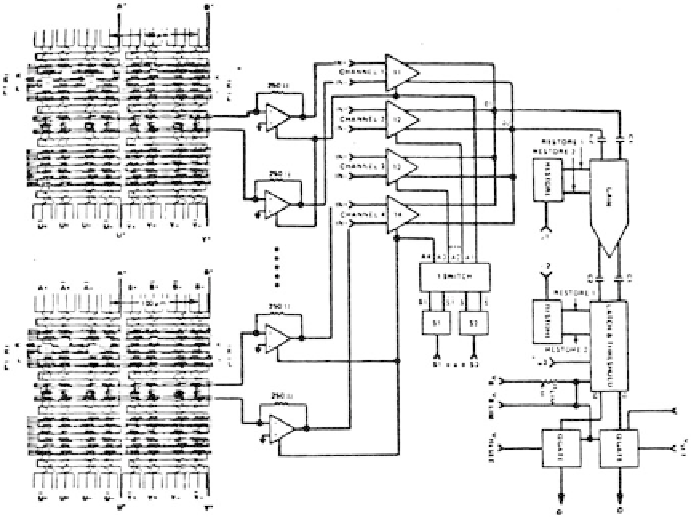Biomedical Engineering Reference
In-Depth Information
FIGURE 3.32
Signal extraction and processing architecture for CRAM.
cell location in a crosstie state, a differential voltage is created. The differen-
tial detection voltage for a single bit obtained when a field is applied in the
annihilation direction but less than the annihilation threshold is less than
300 μv. This low-detection signal level represents a significant challenge to
the widespread implementation of the crosstie memory. As a result, Mentzer
et al. [53] devised a signal extraction and processing architecture (Figure
3.32), which improved the signal level but increased the complexity of the
device significantly.
The Mentzer/Lampe technique utilizes double-correlated sampling to
remove offset nonuniformity fixed patterns by means of serial subtrac-
tion. Postdetection integration is implemented where signals accumulate
constructively and directly while temporal noise is uncorrelated and adds
only in terms of power. Integration of four such samples effectively doubles
the signal to noise ratio. This approach also severely reduces the achievable
memory density and increases power consumption, since the dominant fac-
tor dictating both density and power consumption is the size of the current
drivers required to supply current through the permalloy columns. Clearly
a technique is needed whereby the detection scheme is improved, in favor
of a more direct readout—but still utilizing all of the useful features of the
memory device (electronic write, radiation hardness, etc.).

Search WWH ::

Custom Search